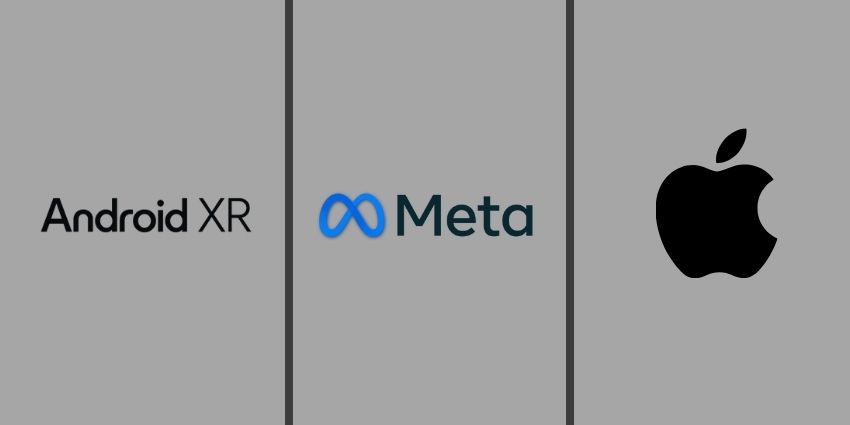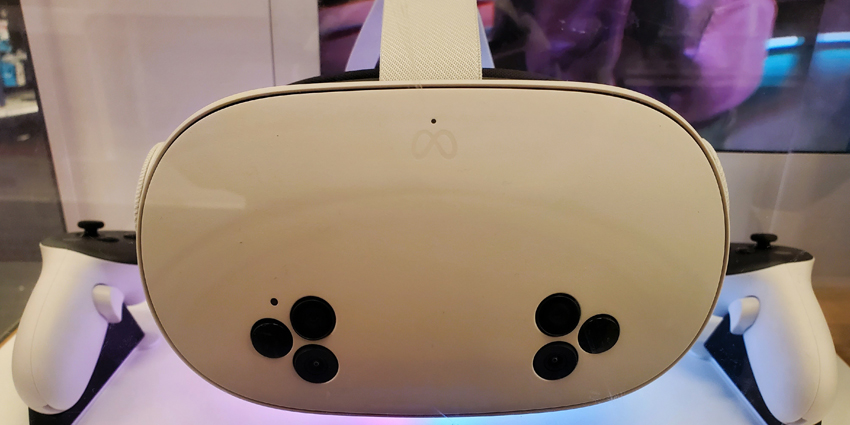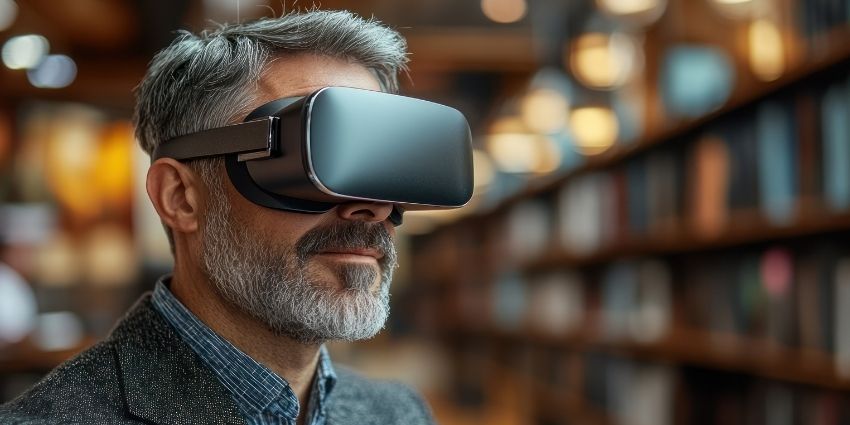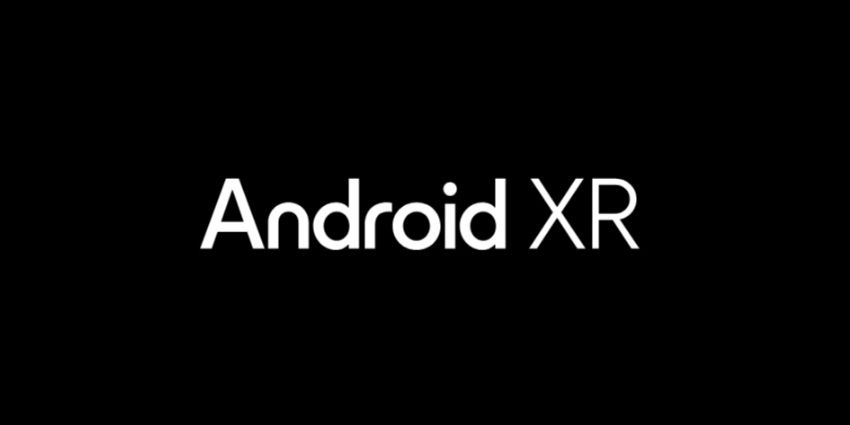Android XR vs Meta vs Apple: which vendor is going to come out on top in the new age of enterprise XR? This war isn’t just being waged in the hardware landscape anymore – although all three vendors are still exploring a wide range of wearable opportunities. It’s a battle between ecosystems too.
Google is reshaping how companies adopt and build XR workflows, with a truly open ecosystem that supports endless devices, apps, and development tools. As the extended reality market accelerates towards a projected value of $84.86 billion by 2029, Google is aiming for a big piece of the pie, with flexible solutions that integrate AI, and adapt to suit any use case.
Here’s your behind-the-scenes guide to how Android XR, Meta, and Apple really stack up against each other, from an enterprise perspective.
Android XR vs Meta vs Apple: The Contenders
Let’s start with a quick look at the XR roadmaps for Google, Meta, and Apple. All three of these companies are investing heavily in extended reality – just in different ways.
Google introduced Android XR as the flexible, open-source platform designed to reduce the barrier to entry for XR adoption. It’s a device-agonistic ecosystem that integrates seamlessly with the wider Android landscape – and all of Google’s existing tools (including Gemini AI). Plus, it gives companies various familiar developer tools to choose from, from Unity, to Android Studio.
While Google doesn’t have many XR devices to offer yet, it’s already partnering with Samsung on Project Moohan and Haean, as well as supporting companies like HTC VIVE, Magic Leap, Sony and many others – so the options could be limitless.
Meta has a head start in the enterprise XR space, with it’s comprehensive Horizon OS ecosystem, Meta Quest for Business, and a range of affordable and high-end devices. It offers a great deal of flexibility to business leaders, alongside easy-to-use platforms and tools, but it still lacks the reach of Android XR. Plus, Google has a slight edge over Meta in developer tools – offering things like camera passthrough APIs – before Meta’s OS.
Apple, on the other hand, is still a relative newcomer to XR. It only has one flagship device (which hasn’t achieved the best adoption rates). The VisionOS ecosystem is constantly evolving, with enterprise APIs, and new features, but Apple lags behind in terms of AI functionality, and broad device options. It’s still very much a “walled-garden” vendor.
The Developer Ecosystem and Tooling Opportunities
So, in the Android XR vs Meta and Apple race – who gives developers the best support? That depends on what you’re looking for. Android XR gives developers the freedom to build where they are, using familiar tools like Android Studio, Kotlin, Jetpack, Unity, Unreal, and WebXR.
Innovators get pre-built AI solutions, tools for creating multimodal spatial apps, convenient modular blocks, and so much more. Plus, they can design for anything, whether they’re creating Web-based AR applications, mobile apps, or solutions for headsets and smart glasses.
Meta also has a strong developer stack, with plenty of tools for Horizon OS development, access to Unity and Unreal Engine, and flexible toolkits. It introduced passthrough access (after Google), and does support OpenXR too. However, Meta’s Horizon OS still heavily favors Meta’s own hardware, and the Quest store for deployment.
Apple gives companies access to developer kits for the Apple Vision Pro, with support for VisionOS features. Creators can experiment with tools like Reality Composer Pro, visionOS frameworks and technologies, motion tracking tools, and more. There’s also support for Unity.
However, even more-so than Meta, Apple keeps developers plugged into their ecosystem – making it hard to extend apps to other devices and platforms.
Hardware & Compatibility: Android XR vs Meta and Apple
At a glance, it seems like Meta wins the hardware battle, with plenty of affordable headset options like the Meta Quest 3 and Quest 3S, as well as previous options like the Quest Pro. The company is focusing mainly on mixed reality at the moment – though it doesn’t offer the same advanced “XR” experiences as companies like Apple with the Vision Pro.
As mentioned above, Google has yet to release a new wearable or device built with Android XR. Still, solutions like Project Moohan (designed to compete with the Vision Pro) and the Haean smart glasses are already in the works. Plus, Google is open to working with countless other device vendors.
On top of that, Android XR experiences are available on a range of other hardware options – outside of headsets, such as computers, smartphones, tablets, peripherals, displays, and kiosks. This could give Google a much wider hardware portfolio than its competitors.
It certainly has a great opportunity to get ahead of Apple, which only offers one, highly expensive headset at the moment (the Vision Pro), although Apple is experimenting with XR experiences accessible through Apple smartphones too.
Enterprise Readiness: Which is Best for Businesses?
Google, Meta, and Apple have all increased their focus on enterprise users in the last few years. Apple’s Vision Pro is designed specifically for enterprise users (hence the higher price tag), and the software developer kits come with enterprise-grade APIs built in. However, Apple doesn’t offer a comprehensive device management solution, unlike Meta.
Meta combines enterprise-ready (affordable) hardware with flexible development tools and the Meta Quest for Business solution, which makes it easy to manage, update, and configure devices remotely for an entire team. Google hasn’t introduced a similar service for Android XR yet, but because this platform is compatible with Android applications, companies should have no problem using the same MDM and device management tools they use for smartphones and tablets with XR wearables.
They’ll also be able to easily access all the tools and features they already use within the enterprise, thanks to the open ecosystem. Plus, Google’s approach to XR solutions is inherently scalable, allowing companies to start small with basic apps and features on their existing hardware, then expand into new headsets and smart glasses, as needed.
Licensing, Costs and Scalability
Again, Meta definitely has an edge over Apple in terms of the overall cost of adoption. Even if you’re paying for extra services like Meta Quest for Business, you can generally save money on the price of headsets, like the Quest 3, and still use familiar platforms like Unity.
Apple’s Vision Pro headset is much more expensive, starting at $3,499, which is one reason the company started slowing down production. The company might introduce a more affordable option in the future, but it’s still likely to be a “premium” purchase for most companies.
So, Android XR vs. Meta—how does Google stack up in terms of affordability? From a hardware perspective, it’s difficult to know. Android XR devices have yet to be released, although products like Project Moohan are expected to be less expensive than the Vision Pro.
Plus, since Android XR’s technologies are accessible anywhere and compatible with existing development tools, there are fewer “development” expenses to consider. As mentioned above, companies can also start accessing XR experiences on the devices they already have. So, if your budget is limited, you don’t have to spend a fortune on hardware straight away.
Android XR vs Meta vs Apple: Who Wins?
Apple, Meta, and Google all offer incredible solutions for companies ready to embrace the future of extended reality. Meta has affordable headsets, flexible software, and a massive app market with Horizon OS. Apple has enterprise-grade visuals and spatial computing experiences offered through the Vision Pro and ever-evolving software.
However, Google has the potential to blow both of these companies out of the water, with an open, AI-powered ecosystem built for enterprise scale. If you’re looking for flexibility, scalability, and endless customization options, Android XR is the clear winner.
Ready to learn more? Check out our full guide to Android XR here.







